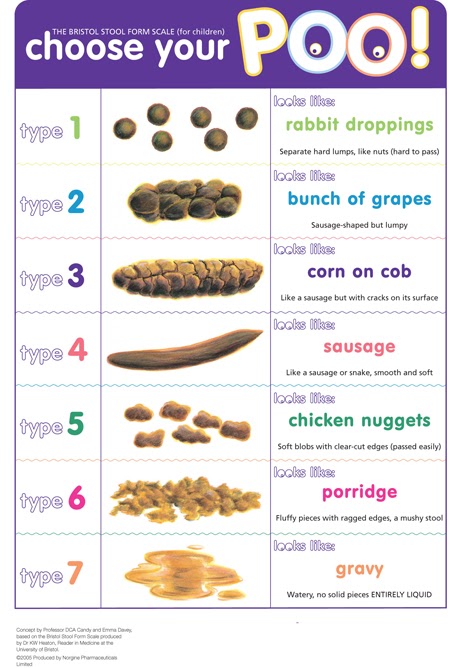 Maybe I should create a t-shirt that says “Skip the chit chat, let’s talk about poop”. This is an actual thought that has passed through my brain. Maybe it’s just being a dietitian but in my world, poop is a perfectly normal thing to talk about. Even outside of work, poop finds its way into my conversations. I’m told by my mom that even in the midst of my birth, I pooped and somehow found a way to inhale it. That’s par for the course. But I turn to the topic now to assure you that I have no squeamishness about it. Let me explain. I’ve completed an at-home stool collection test for myself, which is straight up ICK, my friends. I have changed hundreds of diapers and picked up after dogs with the most active and irritable bowels on the planet. In fact, being the diligent pet owner that I am, I even sifted through dog crap to ensure that my dog had passed the pair of socks that he ate. Yes, you read that correctly. Another story for another time. Suffice to say, I’ve dealt with poop, a lot. I’m not saying I’ve heard or seen everything. But my threshold for being grossed out at this point is pretty darn high. If you work with me, we will be talking about your child’s bowel movements so please don’t feel embarrassed to give me details, and please don’t be surprised if I ask for them! You might think it’s just a load of poo, but that poo can tell us a lot about what’s going on inside the body. There are clues in those poos! All those diaper changes and potty trips are not time wasted. So pay attention to your little ones BMs and read on to get some clarity on what it all means.
Maybe I should create a t-shirt that says “Skip the chit chat, let’s talk about poop”. This is an actual thought that has passed through my brain. Maybe it’s just being a dietitian but in my world, poop is a perfectly normal thing to talk about. Even outside of work, poop finds its way into my conversations. I’m told by my mom that even in the midst of my birth, I pooped and somehow found a way to inhale it. That’s par for the course. But I turn to the topic now to assure you that I have no squeamishness about it. Let me explain. I’ve completed an at-home stool collection test for myself, which is straight up ICK, my friends. I have changed hundreds of diapers and picked up after dogs with the most active and irritable bowels on the planet. In fact, being the diligent pet owner that I am, I even sifted through dog crap to ensure that my dog had passed the pair of socks that he ate. Yes, you read that correctly. Another story for another time. Suffice to say, I’ve dealt with poop, a lot. I’m not saying I’ve heard or seen everything. But my threshold for being grossed out at this point is pretty darn high. If you work with me, we will be talking about your child’s bowel movements so please don’t feel embarrassed to give me details, and please don’t be surprised if I ask for them! You might think it’s just a load of poo, but that poo can tell us a lot about what’s going on inside the body. There are clues in those poos! All those diaper changes and potty trips are not time wasted. So pay attention to your little ones BMs and read on to get some clarity on what it all means.
First things first, let’s take a look at the Bristol stool chart.
Some saintly people in Britain actually created a guide for us – because who wants to awkwardly go into detail describing their poo to a professional when they can just point and say “Yep, that’s what it looks like”.
This chart is super helpful and will give us a visual to discuss and build upon.

Form
Types 1 and 2 tell us there is likely constipation going on. These types of poo may be hard, dried out and difficult to pass.
Type 3 may be a little on the hard side but close to normal.
Type 4 is the ideal poop – smooth, formed and easy to pass, glides right out.
Type 5 is a little on the loose side, but may be normal and perfectly fine for some people.
Types 6 and 7 is where we get into diarrhea territory. There will be a definite urge to “go.” These types of stool spend little time in the colon. They are truckin’ along with no time to chat and on their way out.
Feels
Ideally, bowel movements should be unremarkable. It shouldn’t take a long time to move things out. It should feel complete and there shouldn’t be pain, straining or pushing involved.
Frequency
As for frequency, I’m of the opinion that pooping should be happening at least once a day. Here’s my reasoning – most of us are eating 3 meals a day. Waste is generated from each of those meals and it’s piling up more every time we eat. The longer it sits in our colon, the more water gets reabsorbed, and the harder and more difficult it is to pass. This can lead to constipation, straining, hemorrhoids and all sorts of other pains in the butt – pun intended!
Float
Another thing we want to notice is if our poo sinks or floats. If your poop is soft, loose and floating regularly, this may indicate a problem absorbing fats. You may also see oil/grease or mucus. Floater-poo could also be due to a gastrointestinal infection or excess gas.
Fumes
As for odor, it isn’t going to be great, but it should at least be familiar. An extremely foul smell or an odor that is worse all of a sudden can be a sign that something’s up in the gut.
And last but not least, color.
Of course, poop is usually brown. It may also be green-ish or orange-ish, depending on what you’ve eaten. Brightly colored veggies can change the hue of your poo and this is normal.
If you’ve eaten beets, you may see red poop. Red could also point to bleeding in the lower GI tract. Black poop may mean there’s bleeding in the upper GI tract but it could also be due to iron supplements or other medications. I’ve actually seen this after taking Pepto-Bismol. Black licorice or even lots of blueberries can also cause black stool. Poo that is pale in color, yellow or gray is not normal and would warrant a call to your doctor. Hopefully you’re seeing some pretty standard poo colors and no surprises.
Wrap up
If any of this struck a chord with you, if a flag went up in your head as you were reading and you thought to yourself “yep my kid has that”, reach out to me. Poop problems likely mean there’s something going on upstream; in the gut, with the diet or both. And we can work together to pinpoint the problem and find the solution!
These are just the basics when it comes to the scoop on poop. If your little one is struggling, reach out to me!
Welp, would you look at that, it’s poo-thirty and stool school is out of session.
Oh man, I’ve gotta cut the crap with these poo jokes… Until next time everybody!
Sources:
pennmedicine.org/updates/blogs/health-and-wellness/2019/march/poop
badgut.org/information-centre/a-z-digestive-topics/the-scoop-on-poop



